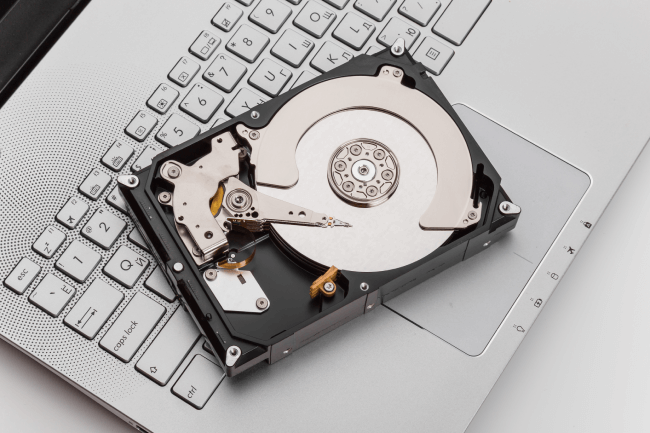Why HDDs Are Still Relevant in Today's Tech World
Insights | 27-01-2023 | By Jack Pollard
Despite its age, the trusty hard disk drive (HDD), with its vast storage capacity and cost-effective nature, still reigns supreme in the data storage world, dominating newer technologies like the speedy solid-state drive (SSD). What challenges do memory technologies face, why are HDDs so popular, and could they be replaced with SSDs?
What challenges do memory technologies face?
Without some form of storage, computers would be practically unusable, as the results from previous calculations cannot be recalled for additional processing. In fact, a computer without memory storage is nothing more than a calculator, and even then, calculators need memory to remember user inputs and to display the result for longer than a single clock cycle.
So, it is clear that memory is important, but despite the numerous memory technologies available to engineers, no one technology can be used as the sole solution. The reason for this lack of a “universal memory” is that each memory technology has both advantages and disadvantages. To better understand this, let’s take a look at a few examples.
Hard Disk Drive (HDD)
By far, the most popular memory technology today used in desktops, laptops, and servers is the Hard Disk Drive (HDD), and this has been around since the 1950s. A disk with a specialised magnetic coating spins at high speed while a read/write head scans over the surface on top of an air bearing, resulting in a separation distance of just a few manometers. Each bit on the disk has a specific physical size (depending on the grain size of the coating), and each bit on the disk can be programmed with one of two magnetic orientations (indicating a 1 and 0).
Because HDDs use extremely small bit sizes and can integrate numerous disks in a single drive, they can store an immense amount of information, and their use of low-cost disk platters makes them one of the most economical memory technologies to date. However, the need for moving arms and disk motion results in larger latencies, which increases file transfer times (this is especially problematic if a disk is fragmented, causing the arm to constantly seek data across the disk).

Flash memory
The second most popular type of memory after HDDs is flash memory, also called solid-state memory. Flash memory differs from HDDs because it doesn't have any moving parts, making it sturdier and more dependable. Flash memory is made from silicon, which makes it easy to manufacture in small devices like smartphones and tablets. Its fast data transfer speed and quick boot times make it a popular option for desktop computers.
However, flash memory has a limited lifespan because it can only handle a certain number of read and write cycles before the cells start to degrade. Furthermore, flash memory is more expensive compared to other storage options, so it's not the best choice for storing large amounts of data for a long time.
![]()
Static random-access memory (SRAM)
Another popular memory technology that is seen in almost all computing systems is static random-access memory (SRAM). Just like how flash memory is solid-state, SRAM is made entirely of transistors (specifically, an SR latch), meaning that it, too, is solid-state, and this makes SRAM extremely easy to integrate into silicon. SRAM is also extremely fast, which is why it is often used in CPU caches where data is transferred from slower external DRAM. However, the high transistor count of SRAM makes it entirely unsuitable for large memories (rarely exceeding a few hundred MB, if that), and the volatile nature of the memory (such that losing power wipes data) only makes SRAM suitable for temporary storage.
Tape memory
And, of course, there is also tape memory which works identically to cassette tapes. Tape memory has the biggest size advantage compared to other memory technologies, with drives having many hundreds of terabytes of storage. In addition, tape memory is designed for long-term storage, making it highly beneficial for moving large amounts of data physically between two points (where it is too insecure to send data over a network) and for historical backups. However, tape memory is not randomly accessible, meaning that retrieving a file from the beginning requires a rewind of the tape. As a result, the tape can never be used for everyday storage and is primarily used for archival and backup purposes.
Tape memory also has a longer lifespan compared to other storage technologies, with some tapes lasting up to 30 years. However, it is also slower and more fragile, requiring specific equipment to read and write data to the tape. Despite these limitations, tape memory is still used by some large organisations and government agencies due to its high storage capacity and long-term data retention capabilities.
Why are HDDs so popular?
When it comes to portable applications, there is no doubt that SSDs rule the market due to their small size, low energy costs, and high access speeds, but in almost all other applications, HDDs are the most popular choice.
Compared to SSDs, HDDs offer a much lower cost per bit, meaning that, for the same price, HDDs will provide more space. This is particularly important in data centres and servers which often rely on thousands of individual HDDs for hosting media, storing backups, and providing data to cloud-based applications.
While SSDs have significantly higher bandwidth capabilities, HDDs are fast enough for most modern applications, and the use of RAM-based HDD caches can allow rapid access to the most commonly used files. Additionally, HDDs also have a virtually unlimited number of read/write cycles, whereas modern SSDs are lucky to get 1 million cycles. This means that HDDs are suitable for long-term data storage and can be reused many times while showing no degradation in performance.
Overall, HDDs continue to provide engineers with the perfect cost-to-performance ratio while offering large memory capacities using technologies that have been tried and tested for decades.
Could SSDs replace HDDs?
In the future, HDDs will likely be replaced with SSDs due to the increased reliability of solid-state technologies, the continuing miniaturisation of devices, and falling silicon costs. This has already happened in the portable electronics industry, where SSDs have obliterated the HDD market (for example, the first iPod used a miniature HDD as SSDs were simply unavailable, but now all portable electronic devices use some kind of flash memory).
In fact, it is probable that in the next 5 years, mainstream desktop machines will primarily use an SSD for operating system uses (providing fast boot times), while an optional secondary HDD will provide large local storage. But as the world moves towards cloud technologies, it is likely that these local HDDs won’t be needed, meaning that HDDs will withdraw to the data centre markets.
If SSDs are to replace HDDs, then it is imperative that the cost of SSDs becomes similar to that of HDDs and that engineers can find solutions around the limited read/write cycles of NAND flash memory. Technologies such as spintronics could help with this, as these supposedly have an infinite number of write cycles. Of course, many non-volatile memory technologies are being explored, so who knows which one will succeed HDDs!


